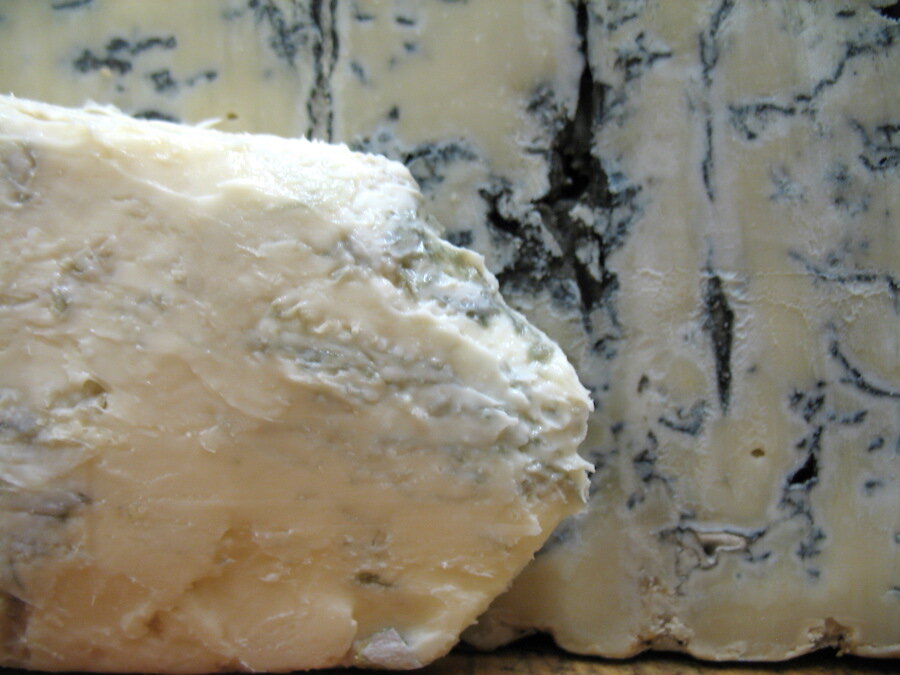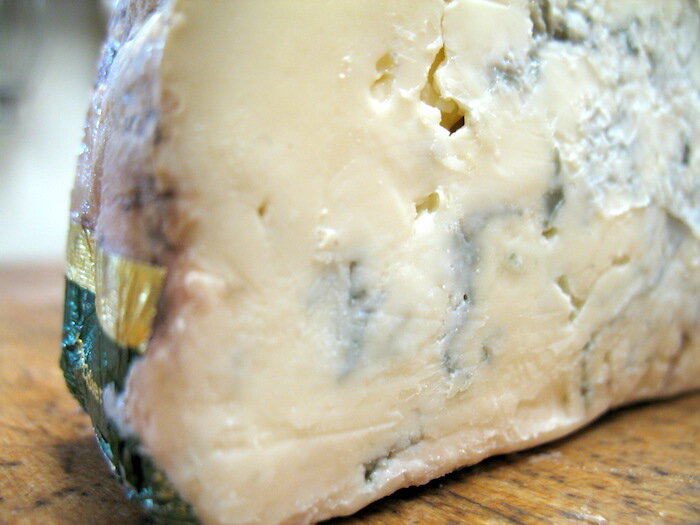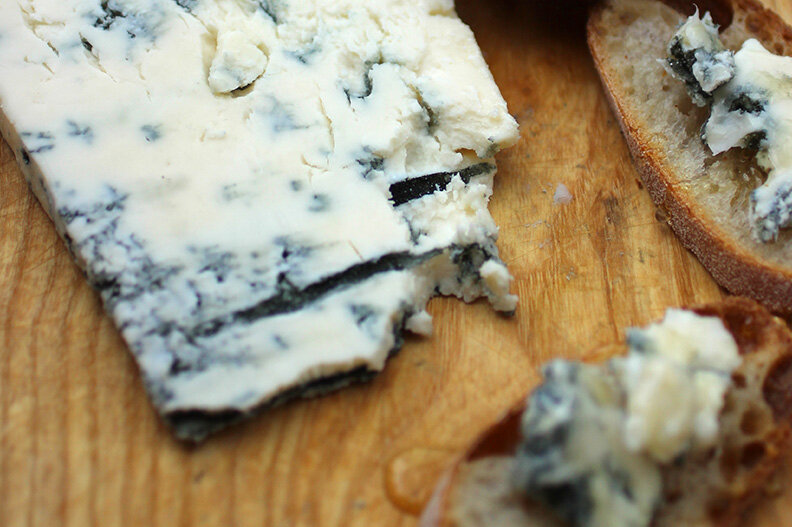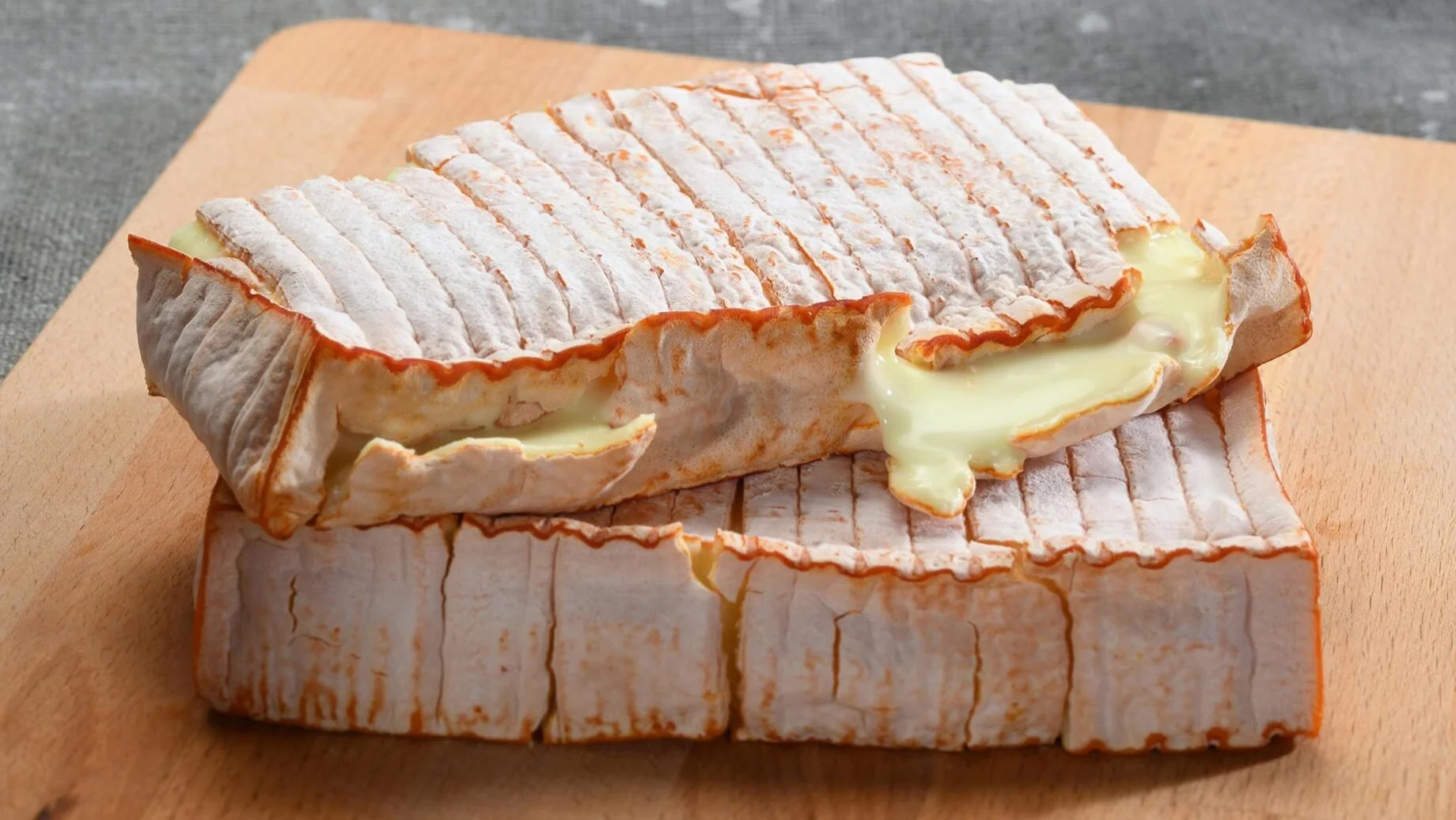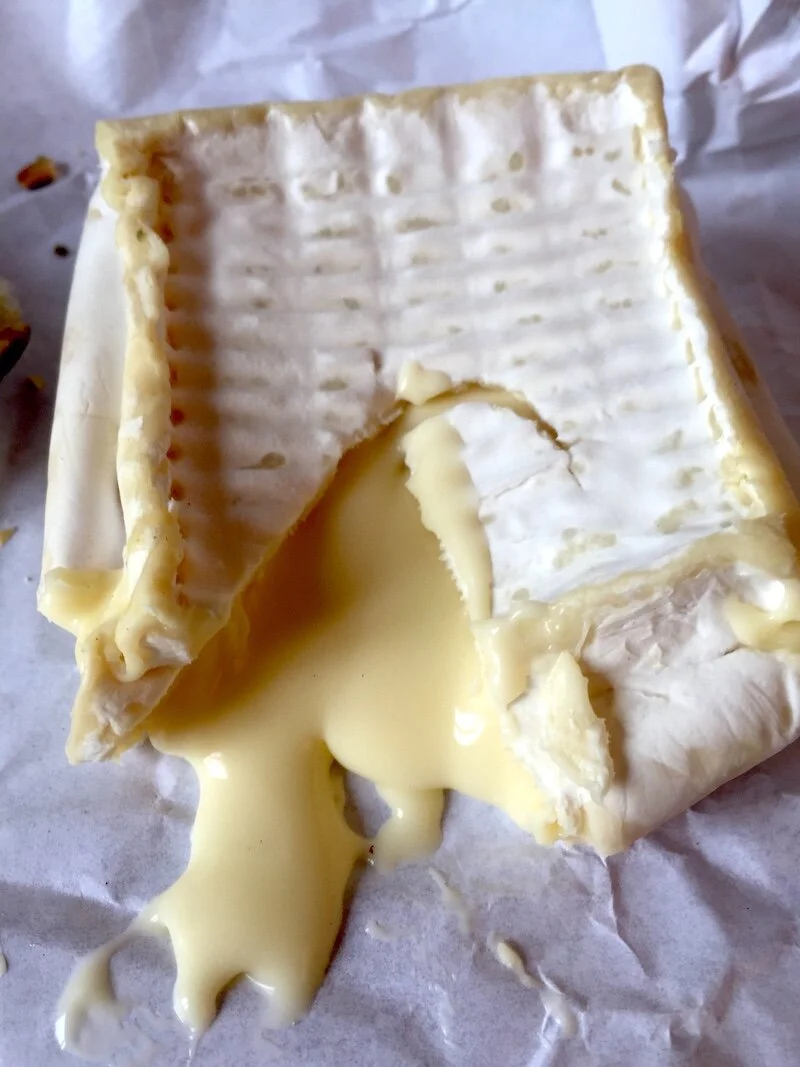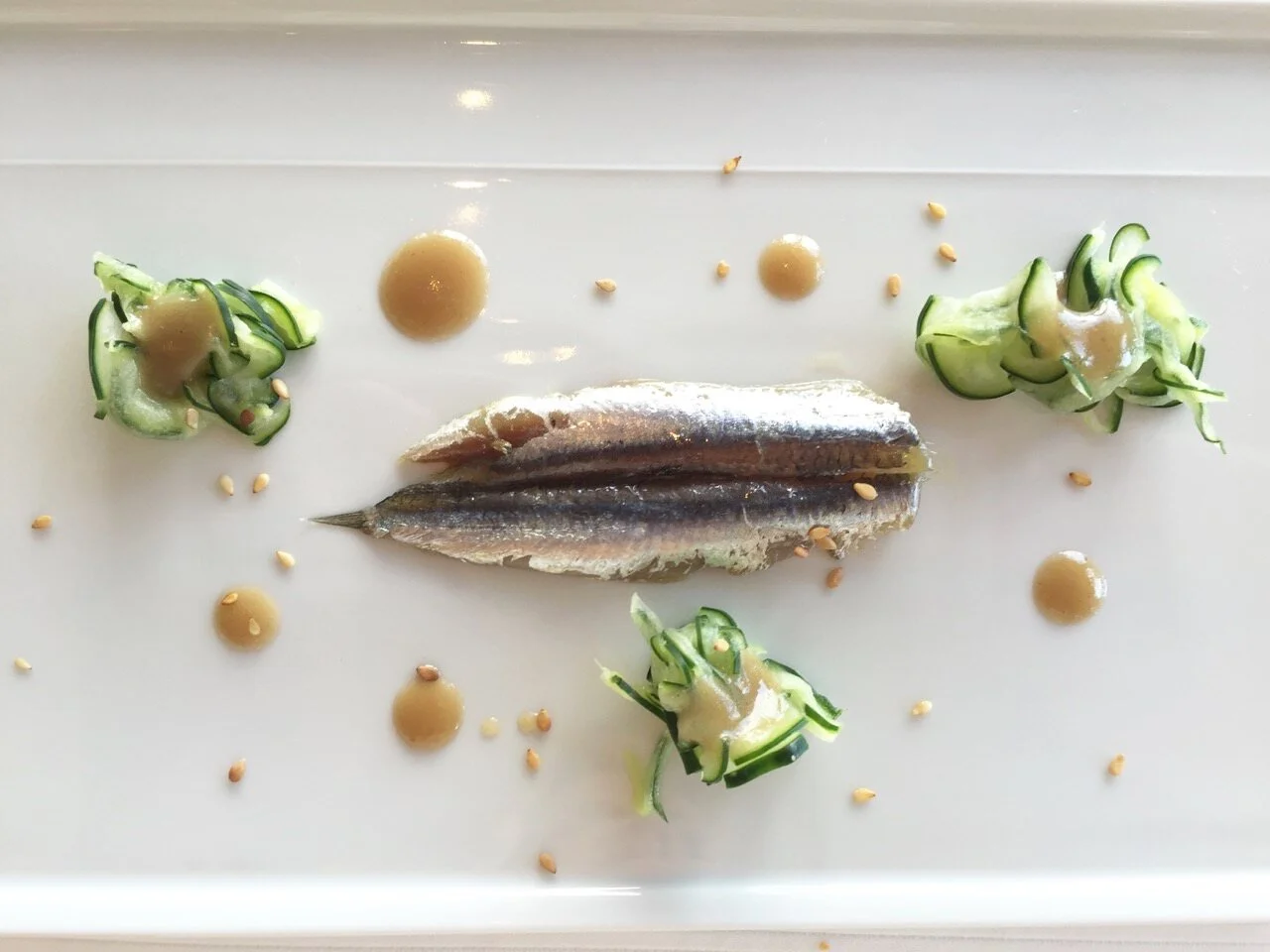Photo: Formaggio Kitchen
World Cheese Encyclopaedia - Each Sunday learn all about a cheese in season.
This week Gorgonzola Dolce from Italy.
Photo: Formaggio Kitchen
Country: Italy 🇮🇹
Region: Lombardy or Piedmont
Made from: Cow’s milk
Pasteurised: Yes
Texture: Soft, creamy
Taste: Milky with notes of sour cream and butter, mild, sweet
Certification: DOP, PDO (EU), DOC
Aging: about 2 months
Gorgonzola is probably the most famous Italian blue cheese. Dating back to the early Middle Ages, many cheese makers around the world have attempted to imitate Gorgonzola, but have had little success, being unable to replicate the balance of moulds found in the ripening caves typical of the Gorgonzola area. Made from whole cow’s milk, it can be buttery or firm, or crumbly and spicy according to age, and streaked with pronounced marbled blue veining.
Meaning "sweet" in Italian, Gorgonzola "Dolce" DOP is a soft, blue, buttery cheese made with uncooked cow's whole milk. The cheese took its name from a small town in Lombardy near Milan, where it said to have been born in the 12th century. It has a white or pale yellow, buttery and melty paste speckled with a homogeneous distribution of blue coloured veins. The rind is compact, rough, hard and grey/pinkish in colour but not edible. The curd for Gorgonzola Dolce is neither cooked nor pressed. This results in a higher-moisture cheese with a lighter, more open texture that allows for ample development of blue mold. The vein development gets a boost when the wheels are three to four weeks old, at which time they're pierced with steel needles to introduce air. The interaction of oxygen with the enzymes, and mold with oxygen, allows the blueing to develop much more rapidly. Flavours are not very assertive but sweet, mild with notes of sour cream and lactic tang. It takes a minimum of 50 days ageing to let Gorgonzola demonstrate its unique characteristics. Weighing about 25 pounds, wheels of Gorgonzola Dolce are usually cut into quarters before shipment, with each piece wrapped in foil to protect the rind and prevent further moisture loss.
Photo: culturecheesemag.com
The original mold that appeared in Gorgonzola was Penicillium glaucum which continues to be used for Gorgonzola Dolce, while Gorgonzola Naturale might use either Penicillium glaucum or Penicillium roqueforti. The choice of mold has to do with differences in color and taste: makers of Gorgonzola Dolce want a green/grey mold with flavors that are a bit sweeter and not too aggressive. In contrast, the Piccante makers generally seek out a darker blue/green mold with stronger aromas and flavors.
Gorgonzola is washed with brine as it ages, encouraging the development of bacteria that give off a distinctive smell (as with all washed-rind cheeses). The production of Gorgonzola is very heavily controlled to ensure that it conforms to certain standards of production – in the EU, it has Protected Designation of Origin (PDO) status and in Italy, it is a DOC cheese. In 1970, a consortium was established to monitor the production of the cheese, encompassing about 40 operations, ranging from family dairies to large factories. Only cheeses sanctioned by the consortium as authentic are stamped with a large “G” and the consortium now requires all DOC Gorgonzola to be pasteurized.
Gorgonzola, made according to the traditional method of hanging the curds overnight, is now rare – most examples of the cheese have the culture introduced to the milk at the beginning of the cheesemaking process. Interestingly, this apparently means more blueing but a milder flavor. The Slow Food’s guide to Italian cheeses, edited by Roberto Rubino, Piero Sardo and Angelo Surrusca, tells us that when you do find cheese made with natural blueing (i.e. no inoculation), it is sometimes called Gorgonzola del nonno (“grandfather’s Gorgonzola”) or Gorgonzola antico (“of the olden days”). Even rarer is the a due paste version of the cheese where the curds left overnight in the original method and are added to the milk of the following morning’s milking.
About 60 dairies, ranging from small family operations to giant industrial concerns, produce Gorgonzola. Gorgonzola Dolce DOP from Arrigoni Battista Spa recently won Super Gold at the 2014 World Cheese Awards and was also judged as one of the world’s 62 best cheeses.
Photo: italianmade.com
History
Gorgonzola is one of the oldest blue cheeses in the world. It was being developed at just about the same time as Roquefort in France, although on a somewhat smaller scale. In an odd coincidence, each of these blue cheeses has at least one genesis story revolving around young love.
In France, Roquefort was apparently the result of a shepherd leaving his lunch (including a loaf of bread and a hunk of cheese) in a cave, while pottering off after a girl. When he returned some days later, both the bread and cheese were imbued with the blue mold of Penicillium roqueforti.
Meanwhile, in Italy, a young Romeo is purported to have been distracted by his lady-love, accidentally leaving his cheese curds to drain overnight. Hoping to hide his mistake, he mixed them in with the morning curd and a few weeks later noticed blueing. Upon tasting the cheese, he realized he had made an unintended but delicious discovery and Gorgonzola came into being. The Italians call this blueing “erborinato” which, like the French term “persillé,” translates as “parsley-ed,” referring to the color and/or visual appearance of the cheese.
In his book, Cheese Primer, Steven Jenkins relates how the tradition in these regions was to herd cattle down from their Alpine pastures in the fall, to the southern lowlands for winter grazing. In the spring, the reverse journey would be made. During these journeys, the cows would need to be milked at outposts along the way.
One of the resting points for these weary Italian cows was near the town of Gorgonzola, a major center for trade. As a result, twice a year – in the spring and in the fall – the area was inundated with quantities of milk too large for the populace to drink. Gorgonzola was the result of a need to find a way to store the excess milk. After an evening milking, the curds and whey were separated. The curds were hung up in a cloth to drain overnight.
Photo: carrefour.fr
The next day, the night curds would be placed in a mold constructed of wooden rings, followed by the morning curds. The blueing in Gorgonzola occurred naturally – the mold was indigenous to the region and to the caves of Valsassina where the cheeses were aged. Over time, the Gorgonzola recipe evolved to showcase this natural phenomenon. Today, the bulk of the cheeses are pierced with needles at 4-weeks of age to encourage growth of the blueing culture that is used. In the World Cheese Book, Juliet Harbutt tells us that this piercing occurs in a place called “purgatory,” namely a very hot room with up to 95% humidity. This method means that the cheeses blue more quickly and, according Jenkins, finish their initial aging cycle in three months. Most wheels, however, are aged to at least six months. This compares to the historical, natural method which would involve cave aging of a year or more.
How to enjoy it
Gorgonzola Dolce pairs well with a Tuscan Vin Santo or a Champagne.
Eat it with crushed walnuts and a drizzle of honey accompanied by chunky bread for a great picnic lunch.
A simple but delicious recipe is Gorgonzola mixed with a bit of cream and a little nutmeg for a tasty pasta sauce. The sauce is ready as soon as the cheese melts and combines with the cream. Serve with Tagliatelle.
Sources: culturecheesemag.com, Formaggio Kitchen, mammaprada.com, cheese.com
Follow True Foodies

